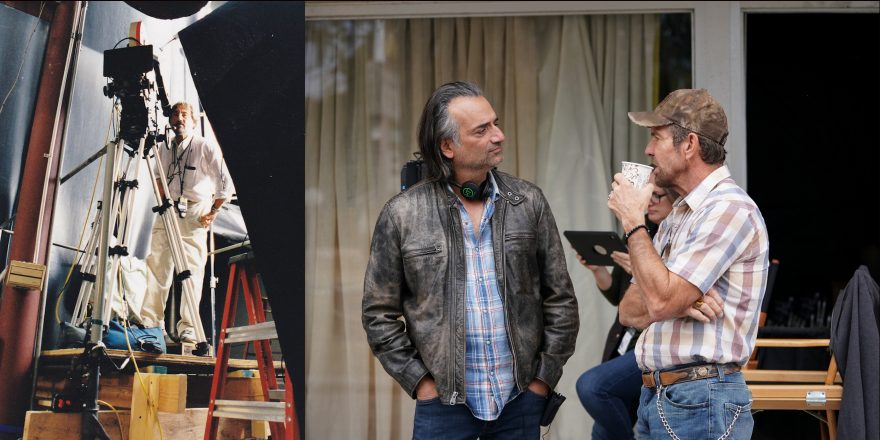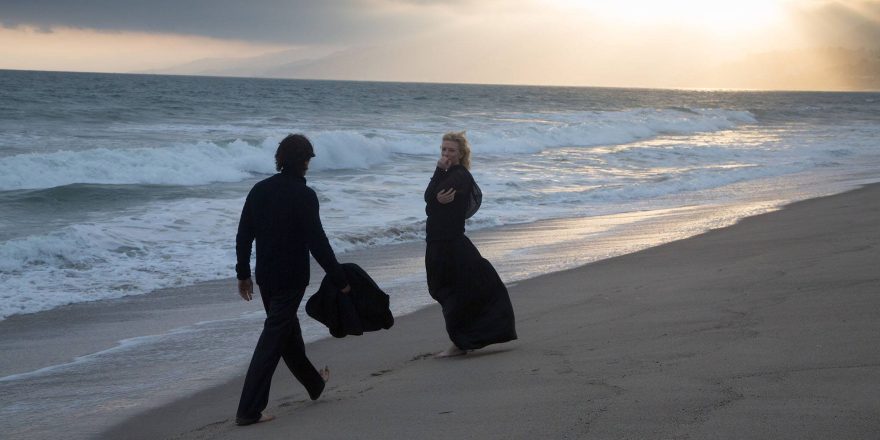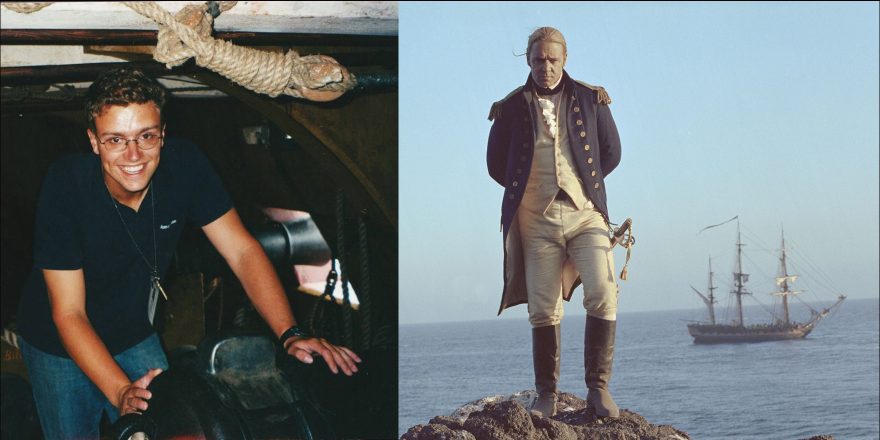I was fortunate enough to get into computer graphics back in the days before anyone had a computer on their desk. We used to wait a very long time for one single frame of an HBO logo to render back when “high resolution” was only 720 x 480. When we started doing early visual effects for commercials in the early ’90s, we realized that directors didn’t necessarily know what we needed when they shot the VFX shots, so we decided that someone needed to leave the safe, warm offices of our computer graphics company and venture to the cold Hollywood sound stages to inform A-list commercial directors, many making more than $30,000 a day, how to film our shots. That someone was, very often, me. For the next (insert large number here) I’ve worked as a visual effects supervisor on literally hundreds, if not thousands, of big-budget commercials and several feature films.
One fortunate benefit has been that I’ve had the privilege to work side by side with so many incredible directors — David Fincher, Michael Bay, Mark Romanek, Wes Anderson, Antoine Fuqua, David O. Russell, Michael Mann to name just a few. And, not to mention, an amazing list of A-list cinematographers such as Emmanuel “Chivo” Lubezki, Jeff Cronenweth, Janusz Kamiński and many others.
There’s no way that working alongside such talented artists like these every day couldn’t affect someone. Witnessing in real time how they made decisions about everything concerning performance, composition, lighting, set design, art direction, wardrobe and every other aspect of filmmaking essentially became my film school.
Over the years, I also got to see how some other filmmakers worked — I got to see firsthand what not to do. I’ve seen a director scream and brutally belittle a crew person for more than 20 minutes, driving them to tears. It was like watching a verbal murder. I’ve seen a director so unsure of themself that they shot an insane number of options for a single shot, all the while losing the respect and confidence of the entire cast and crew. I’ve seen a director in a fit of rage throw a camera across a stage and onto the floor, breaking it into pieces. I’ve seen a director give an actor no direction at all, literally saying, “Just do it again” and nothing else all day for more than a hundred takes!
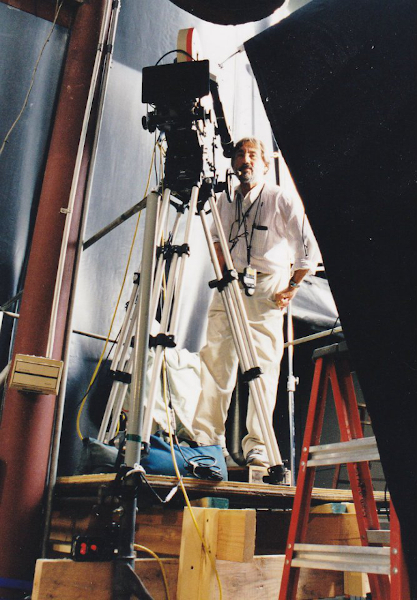
It’s normal that we all strive to learn from our role models, but I also believe we can learn just as much from what I call negative role models.
Certainly one thing I’ve learned on every production I’ve ever been a part of is that it’s incredibly obvious that the director sets the tone. Some may disagree, but I believe the crew gives their best when they’re treated with respect. You know … what goes around comes around.
Probably the greatest lesson I learned came on the set of the very first commercial I directed. I was given the privilege of directing a national commercial for Hallmark, mostly because the spot featured two snowpeople that come to life and fall in love, all thanks to visual effects. To give the agency some peace of mind after hiring a young, first-time director, we hired an A-list cinematographer to work with me. It was none other than Vilmos Zsigmond, Oscar-winning cinematographer of Close Encounters of the Third Kind, The Deer Hunter, Deliverance, etc.f He’d worked with Steven Spielberg, Woody Allen, Robert Altman … so yeah, I was in good hands.
On the very first shot of the first day, we were setting up a high, wide shot of the set. Vilmos had the camera 20 feet up on parallels and was framing up the shot. He shouted across the stage to me down below (in his trademark scratchy voice), “Ray, take a look at this.” I looked in the monitor and it wasn’t exactly what I wanted.
I was now faced with the brutal decision to shoot something I didn’t want — or instead tell the D.P. who worked with Spielberg that this first-time director didn’t like his composition. My heart pounded a little.
After a moment, I got the courage to ask Vilmos to change the composition … and the stage got pretty quiet. This was his crew, remember, and they all stopped and waited to see his reaction.
My heart started pounding even more.

Vilmos quietly moved the camera to my suggested spot, looked through the lens and then said, loud enough for everyone to hear, “You’re right, Ray. This is much better. I love it!”
After a moment, I was able to breathe again and put my heart back in my chest.
In retrospect, I seriously doubt my version of the shot was any better than his. He could have laughed me off, told me to go to hell, or worse. Instead, he couldn’t have been more gracious to work with. No ego. No attitude.
The rest of the shoot was awesome. And Vilmos saved me from myself several times later that day. He was an absolute pleasure to work with.
I learned a lot that day, not the least of which was how to treat your coworkers. Any kind of filmmaking is a privilege. We should treat it that way.
—-//—-
When we finally started pre-production on my new film, The Tiger Rising, I knew that casting would be the single most important aspect of my job. Not only casting the actors, but the casting of the main department heads. The D.P., 1st A.D., production designer, VFX supervisor and later, the editor, composers, sound mixer and colorist. Those would be the people I dealt with every minute of every day as we made the film. Without a doubt, choosing those talented artists affected the entire production.
And remember, each one of those department heads then hires their own crew. Who they hire also has a huge effect on the tone and texture of the entire set. I remember hearing Olivia Wilde, when preparing to direct her first feature, Booksmart, had what she called a “no assholes policy.” I loved that and quickly adopted it on Tiger, telling the department heads to use that when they hired their crews.
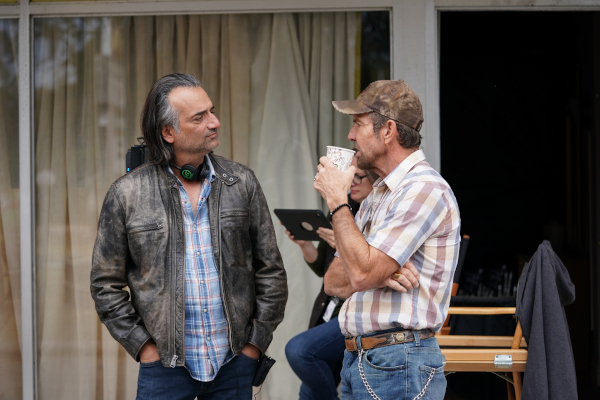
My goal was to create as relaxed a set as possible and still keep it professional and efficient. The weight of the entire film rested on the shoulders of our two 10-year-old actors, but it was my goal for them to never feel that weight. Instead, I wanted them to feel like every crew member was their uncle, aunt or cousin. They needed to be free from worry about making mistakes or taking too long, or anything else that might hinder their ability to do their best work.
In that regard, I feel like we succeeded. Our set was very low pressure and had a family-like feel to the entire production. Lots of mutual respect everywhere on set. Hopefully that shows up on the screen.


